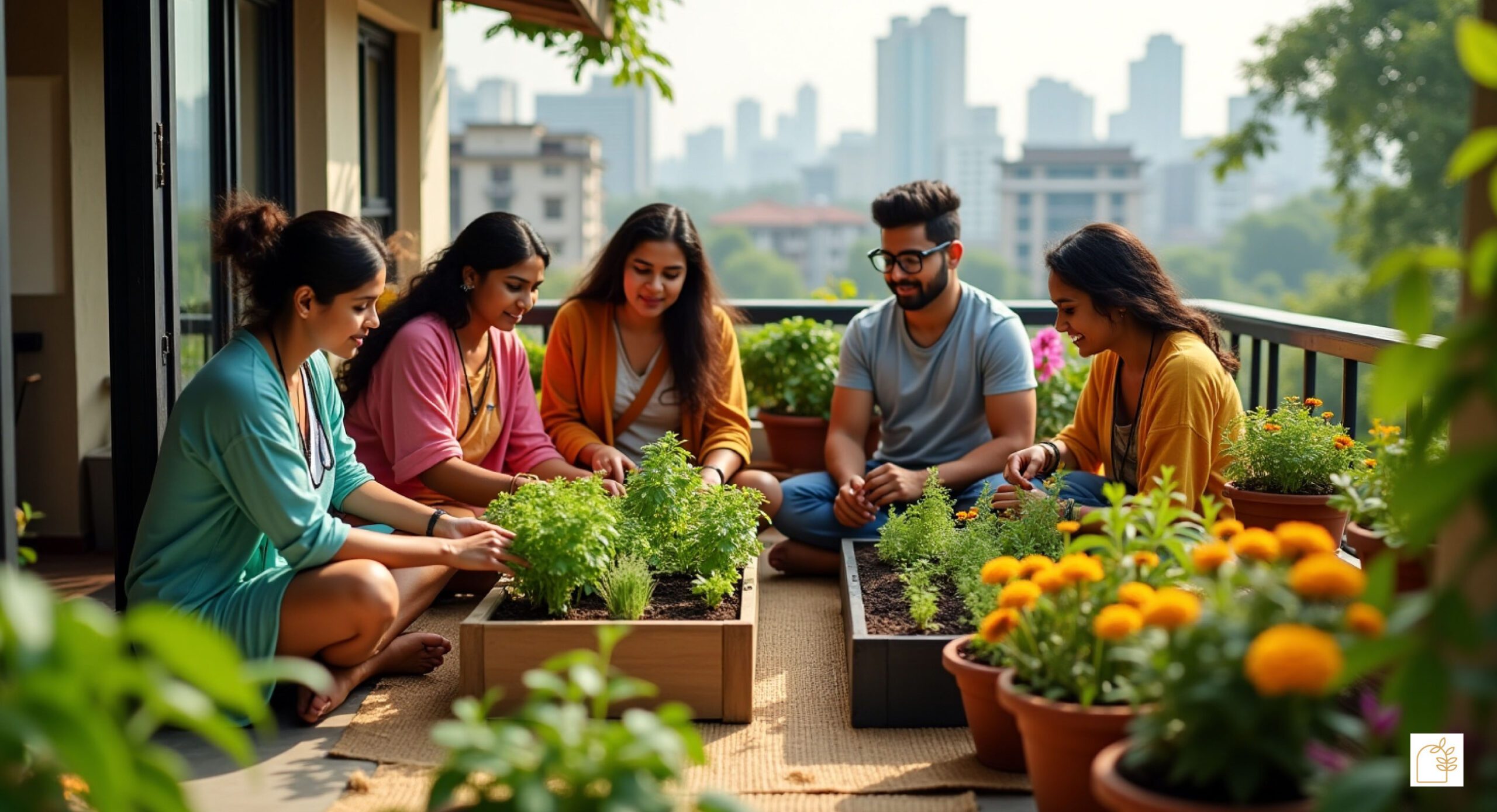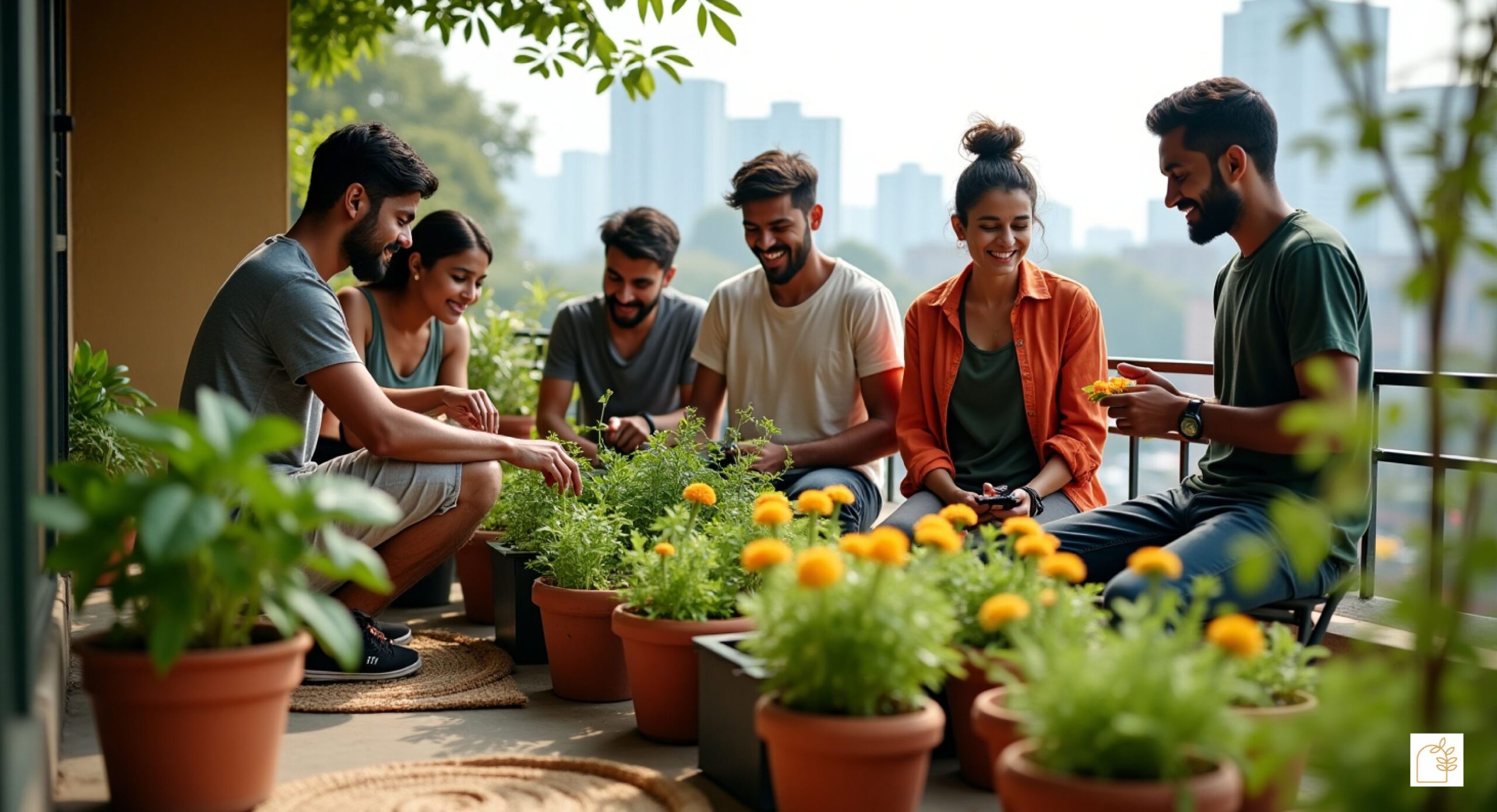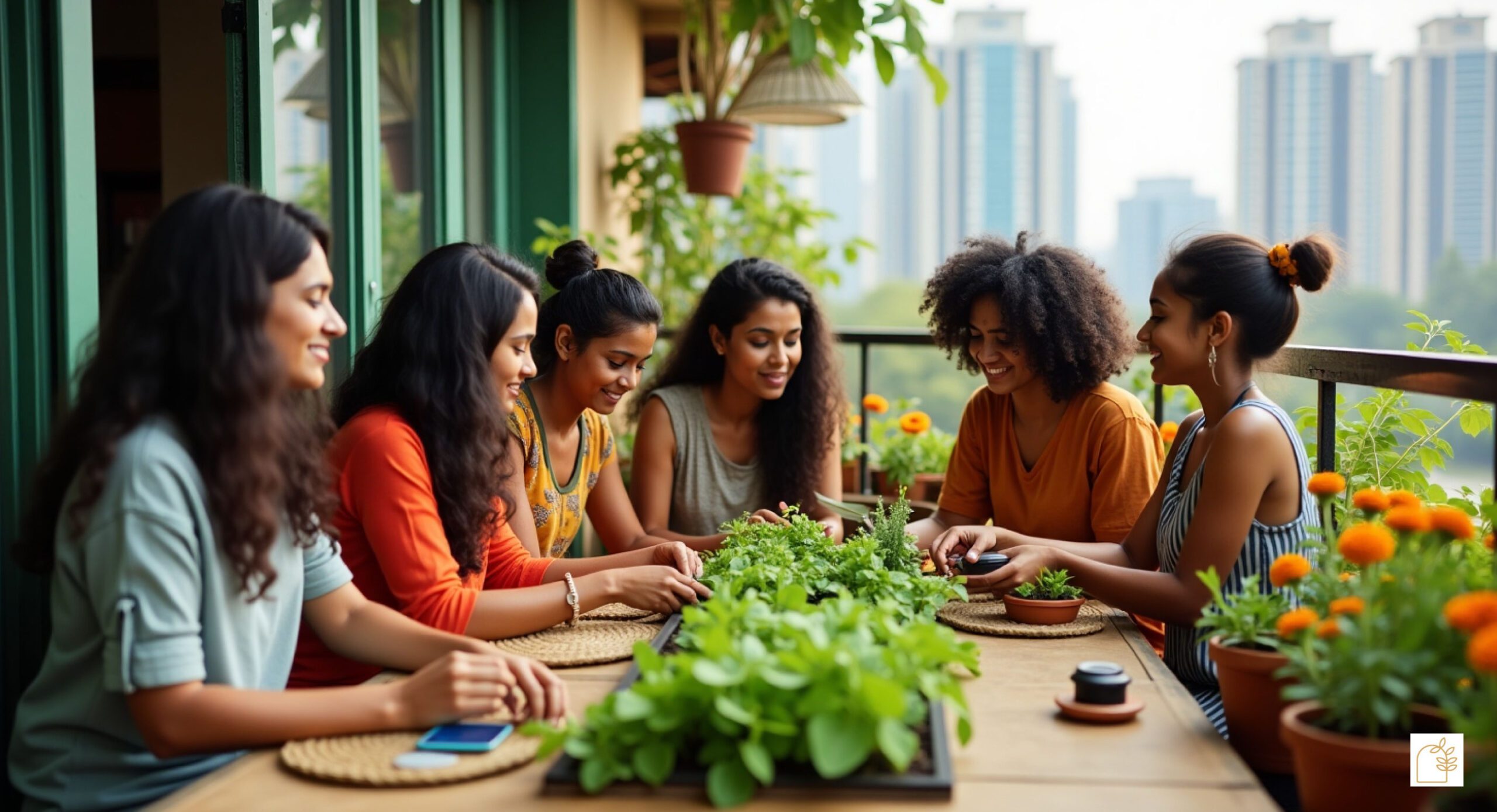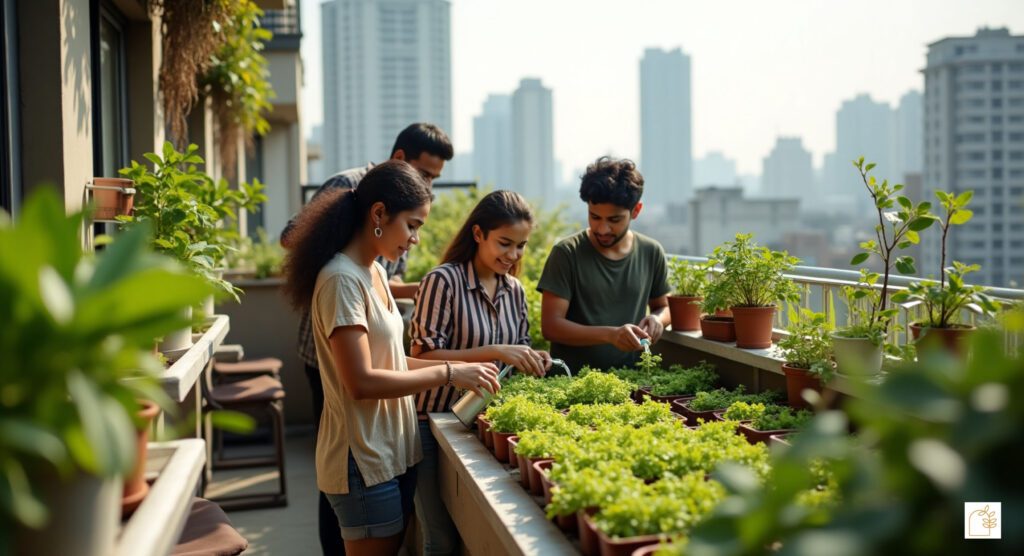In 2025, sustainable gardening is transforming backyards, balconies, and community spaces across India, aligning with the nation’s push for eco-conscious living. With 3,500 IGBC-certified green projects (FICCI, 2024) and a growing urban population (70% in cities, Knight Frank, 2024), gardening practices that conserve resources, boost biodiversity, and reduce waste are more relevant than ever. Whether you’re a homeowner in Bengaluru, a student in a Delhi hostel, or a retiree in a Tier-2 city like Coimbatore, sustainable gardening offers affordable, impactful ways to grow food and flowers while protecting the environment.
Why Sustainable Gardening Matters in 2025

India’s rapid urbanization and climate challenges—rising temperatures (1.5°C above pre-industrial levels, IMD, 2024) and water scarcity—demand eco-friendly gardening. Sustainable practices reduce water and chemical use, enrich soil, and support biodiversity, with 60% of urban Indians adopting green hobbies (Financial Express, 2024). Gardening also cuts food costs (vegetables up 6% annually, Economic Times, 2024) and promotes mental well-being. From balcony herb gardens to community plots, these methods suit spaces as small as 50 sq. ft., making them ideal for India’s 63 million MSME-driven communities (MSME Ministry, 2024).
As a horticulture expert, I’ve helped diverse gardeners adopt sustainable methods. This guide shares seven practices to create thriving, eco-friendly gardens in 2025.
Top Sustainable Gardening Practices for 2025
1. Water Conservation with Drip Irrigation
Drip irrigation delivers water directly to plant roots, reducing waste by 60% compared to traditional watering (Krishi Jagran, 2025). Affordable systems (₹2,000-₹5,000, Amazon India, 2025) are ideal for small gardens or balconies. Rainwater harvesting, using barrels (₹1,500-₹3,000), captures monsoon rains, cutting reliance on municipal water in water-stressed cities like Chennai.
Actionable Tip: Install a drip kit from amazon.in and collect rainwater in buckets for small spaces.
2. Composting Organic Waste
Composting kitchen scraps (vegetable peels, coffee grounds) into nutrient-rich soil reduces landfill waste by 30% (Down to Earth, 2024). Home composters like the TrustBin (₹1,200, TrustBasket, 2025) fit balconies and produce compost in 4-6 weeks. Vermicomposting with earthworms accelerates the process, ideal for urban gardeners growing tomatoes or spinach.
Actionable Tip: Start composting with a TrustBin from trustbasket.com and add worms for faster results.
3. Native and Drought-Tolerant Plants
Native plants like marigolds, hibiscus, and curry leaves thrive in India’s climate, requiring less water and care. Drought-tolerant varieties like aloe vera or bougainvillea suit arid regions like Rajasthan. These plants support pollinators, with 80% of India’s crops relying on bees (Krishi Jagran, 2024), boosting biodiversity.
Actionable Tip: Source native seeds from nurserylive.com for low-maintenance gardening.
4. Vertical Gardening for Small Spaces

Vertical gardens use wall-mounted planters or trellises (₹500-₹2,000, Pepperfry, 2025) to grow herbs, strawberries, or creepers in tight spaces like balconies. They maximize 50-100 sq. ft. areas, improve air quality, and reduce urban heat. Modular systems allow easy setup for students or renters.
Actionable Tip: Install a vertical planter from pepperfry.com for herbs like basil or mint.
5. Organic Pest Control
Chemical-free pest control, using neem oil (₹200-₹500/litre, Amazon India, 2025) or companion planting (marigolds with tomatoes), protects plants and soil health. Biopesticides like Bacillus thuringiensis (Bt) target pests without harming pollinators, aligning with India’s organic farming push (APEDA, 2024).
Actionable Tip: Mix neem oil with water for a DIY spray; buy from amazon.in.
6. Soil Health with Mulching
Mulching with dry leaves, straw, or coconut coir (₹100-₹300/kg, TrustBasket, 2025) retains soil moisture, reduces weeds, and enriches soil. It cuts water use by 25% and supports microbes, vital for healthy gardens (Krishi Jagran, 2025). Mulch is ideal for vegetable beds or potted plants in humid climates.
Actionable Tip: Use coconut coir from trustbasket.com for potted plants.
7. Seed Saving and Heirloom Varieties
Saving seeds from crops like tomatoes or okra ensures cost-free planting cycles. Heirloom varieties, like native brinjal or amaranth, preserve biodiversity and resist local pests. Seed banks, supported by 100,000 startups (MSME Ministry, 2024), offer affordable heirloom seeds (₹50-₹200/packet, NurseryLive, 2025).
Actionable Tip: Join a seed-saving community via nurserylive.com to exchange heirloom seeds.
Sustainable Gardening Practices 2025
| Practice | Details | Benefit |
|---|---|---|
| Drip Irrigation | Direct root watering, rainwater harvesting. | Saves 60% water, suits small spaces. |
| Composting | Kitchen scraps to compost in 4-6 weeks. | Reduces waste, enriches soil. |
| Native Plants | Marigolds, hibiscus, drought-tolerant varieties. | Low maintenance, supports pollinators. |
| Vertical Gardening | Wall planters, trellises for herbs, creepers. | Maximizes space, improves air quality. |
| Organic Pest Control | Neem oil, companion planting, biopesticides. | Protects plants, eco-friendly. |
Benefits of Sustainable Gardening
- Cost Savings: Composting and seed saving cut costs by ₹2,000-₹5,000 annually (Krishi Jagran, 2025).
- Environmental Impact: Reduces water use, waste, and chemical pollution, aligning with India’s green goals.
- Health Benefits: Home-grown vegetables and herbs improve diet; gardening reduces stress (Financial Express, 2024).
- Space Efficiency: Vertical gardens and small planters suit 50-100 sq. ft. balconies or terraces.
Actionable Tip: Start with a small herb garden (basil, mint) to save ₹500/month on groceries.






4 thoughts on “Sustainable Gardening Practices in India 2025: Grow Green, Live Green”